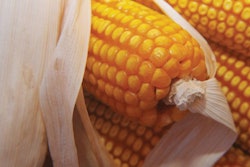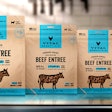
As the recall of potentially aflatoxin-contaminated dog food goes international and a lawsuit over dozens of pet deaths goes to court, dog, cat and other pet food manufacturers can learn how to avoid their own tragic and costly recalls. Scientists at the Autonomous University of Aguascalientes (Universidad Autónoma de Aguascalientes) reviewed decades of research on aflatoxin contamination in dog food, including prevention methods. The journal Toxins published their literature review, “Toxic Effect of Aflatoxins in Dogs Fed Contaminated Commercial Dry Feed: A Review.”
1. Physical processing
Physical processing of dog food ingredients, such as sieving and pearling of cereals, helps to separate damaged grains and abrasion of the outer portions of the seeds. Doing this decreases fungal growth, resulting in less likelihood of mycotoxin contamination.
Read the original research - “Mycotoxin issues in pet food” in Food Feed Safety Systems and Analysis.
2. Washing techniques
Washing techniques for cereal grains helps reduce later aflatoxin problems, but the grains must be completely dried afterwards, which increases costs.
Read the original research – “Mycotoxins in pet food: a review on worldwide prevalence and preventative strategies” in the Journal of Agricultural and Food Chemistry.
3. Extrusion
The high temperature and pressure used in proper extrusion technique eliminates fungal spores in the mixture of raw materials.
4. Fungal inhibitors
Pet food producers can use fungal microbiota inhibitors based on a wide variety of chemical compounds, including benzoic, acetic, sorbic and propionic acids, which inhibit fungi by acidifying their cytoplasmic content.
Read the original research – “Weak‐acid preservatives: modelling microbial inhibition and response” in the Journal of Applied Microbiology.
5. Ozone gas
Ozone gas (O3) in pet food processing acts as an oxidizing agent because the gas alters the structure of cell membranes and induces alterations in cell permeability and destruction of fungal microbes. Also, the gas reacts with compounds in the kibble, altering aflatoxins’ structure, creating another chemical that degrades into less toxin chemicals, like carboxylic acid, aldehyde, ketone, and carbon dioxide.
Read the original research – “Ozone Gas Antifungal Effect on Extruded Dog Food Contaminated with Aspergillus flavus” in Ozone: Science and Engineering.
History of the Sportsmix aflatoxin recall
Midwestern Pet Food recalled the contaminated product on December 30, 2020. However, more than two dozen dogs had already died by that time. By January 21, more than 110 pets had died and more than 210 sickened after eating the products, according to the U.S. Food and Drug Administration (FDA). On January 11, the recall expanded to include all Midwestern Pet Food products containing corn, manufactured in Oklahoma and with an expiration date on or before July 9, 2022. Lawyers filed a class action lawsuit against Midwestern Pet Food on behalf of Tammy Johnson in the U.S. District Court of Indiana on January 15. On January 25, FDA announced a list of dozens of countries, from Bahrain to Vietnam, to which the contaminated pet food may have been exported.















